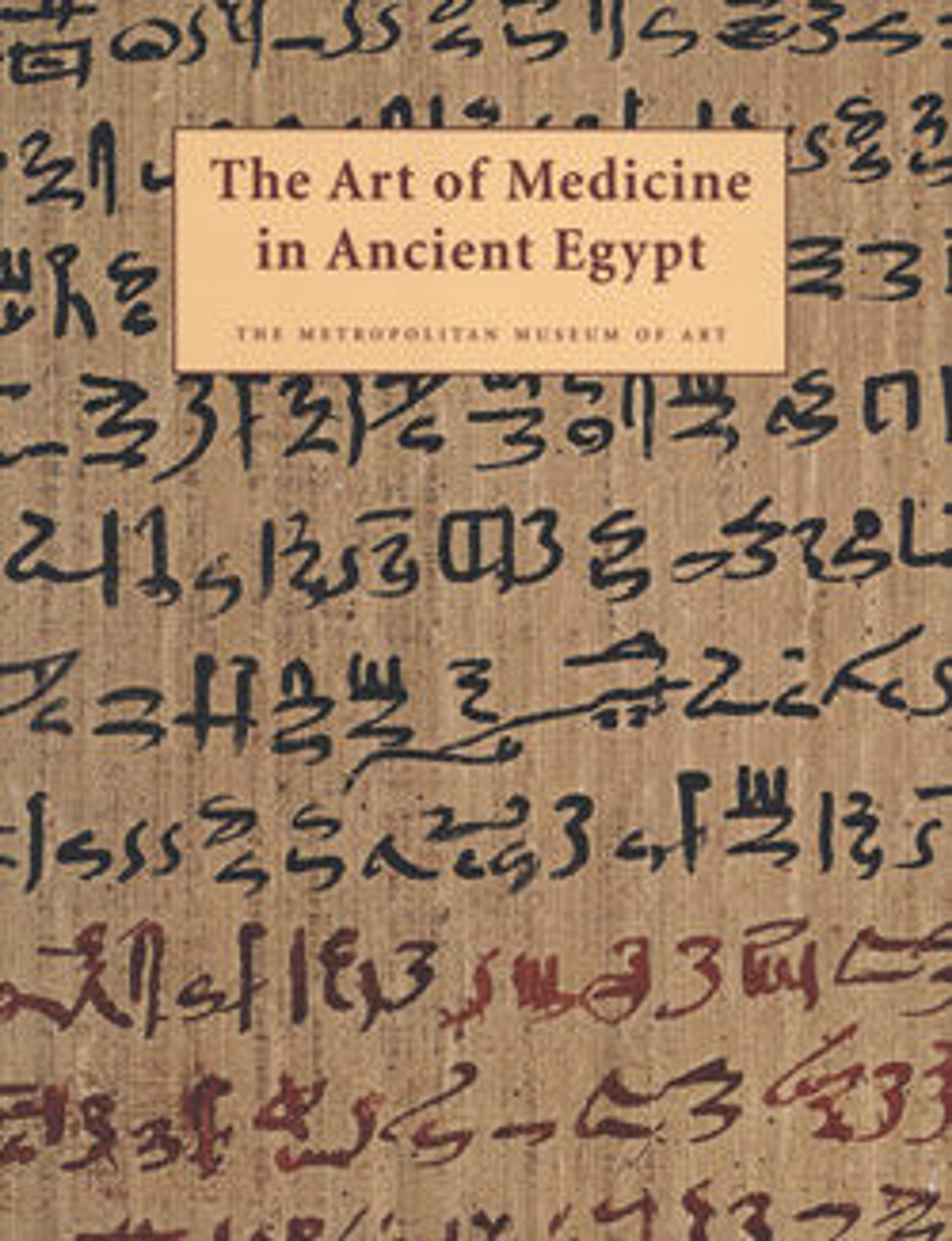Fishtail Knife
Blades such as this one were included in burials throughout the Predynastic Period.The cutting edge is the V-shaped notch. Although the implement's exact purpose is unknown, there is persua-sive evidence that it was used at birth to cut the umbilical cord and was placed in the grave to assist its owner's rebirth into the afterlife.
A similar instrument was used throughout Egyptian history in the funerary rite known as the "Opening of the Mouth": touched to the mouth of the deceased's mummy or statue, it symboli-cally restored the individual's capability of independent existence. In addition to the implement, this model set also contains replicas of the vessels with which the newly revived spirit was of-fered milk (a baby's first source of nourishment), salt water (used for cleansing), and fresh water.
A similar instrument was used throughout Egyptian history in the funerary rite known as the "Opening of the Mouth": touched to the mouth of the deceased's mummy or statue, it symboli-cally restored the individual's capability of independent existence. In addition to the implement, this model set also contains replicas of the vessels with which the newly revived spirit was of-fered milk (a baby's first source of nourishment), salt water (used for cleansing), and fresh water.
Artwork Details
- Title:Fishtail Knife
- Period:Predynastic, Naqada II
- Date:ca. 3650–3300 B.C.
- Geography:From Egypt
- Medium:Flint
- Dimensions:L. 5.8 x 0.8 x 15.7 cm (2 5/16 x 5/16 x 6 3/16 in.)
- Credit Line:Rogers Fund, 1916
- Object Number:16.2.4
- Curatorial Department: Egyptian Art
More Artwork
Research Resources
The Met provides unparalleled resources for research and welcomes an international community of students and scholars. The Met's Open Access API is where creators and researchers can connect to the The Met collection. Open Access data and public domain images are available for unrestricted commercial and noncommercial use without permission or fee.
To request images under copyright and other restrictions, please use this Image Request form.
Feedback
We continue to research and examine historical and cultural context for objects in The Met collection. If you have comments or questions about this object record, please contact us using the form below. The Museum looks forward to receiving your comments.
